HERE’S YOUR CHANTS
A concert for the ages—and all ages—arrived at the stunningly gorgeous Segerstrom Concert Hall last night. The tremendous spirit of Pacific Symphony’s presentation of Ottorino Respighi’s Church Windows (1925) and Maurice Duruflé’s Requiem (1947) was more than matched by the sheer size of the event.
Written for SATB choir and soloists, there are three orchestrations for the transplendent, transcendent Requiem: one for organ alone; one for organ, strings, and few optional instruments; and one for organ and full orchestra. What do you think conductor Carl St.Clair offered? The royal treatment. Supporting the sparkling Pacific Chorale (Artistic Director John Alexander) and the massive orchestra were the in-demand organist Paul Jacobs and soloists Elise Quagliata and William Berger.
The soulful mezzo-soprano Quagliata was mesmerizing and moving in her only solo, the fifth of nine movements, “Pie Jesu.” It’s a shame that Berger had only two parts (the third movement “Domine Jesu Christe” and the penultimate “Libera me”)—you can’t help but surrender to his sweet, sturdy, sonorous, and substantial baritone. Jacobs proves why he’s a missionary of the organ; if you haven’t been a fan of this intricate instrument before, he will convert you. Maestro St.Clair is a most dramatic conductor, but he does so with authentic emotion and spirituality (the way he held us rapt in silence after the final note of the Requiem is alone worth the price of admission). No showoff, Jacobs avoided blasting us to kingdom come (however appropriate for a Requiem); this artist of the pipes blended well with St.Clair’s heightened intensity by not overdoing the resonance.
Opening the program was Respighi’s colossal and rarely performed Church Windows—four tone poems of a sweeping religious nature—which was actually inspired by the artistry of stained glass. The titles—“The Flight into Egypt,” “St. Michael the Archangel,” “The Matins of St. Clare,” and “St. Gregory the Great”—create Biblical images for us more than they tell a story, and were added after the music was completed. However, the story of St. Gregory, better known as Pope Gregory I (540 – 604), became a fulcrum for this spiritual voyage that continues through Saturday. As the thorough lobby display validates, the Gregorian chants that both inspired Duruflé’s Requiem and informed passages of Church Windows did not become a widespread tradition until the ninth and tenth centuries.
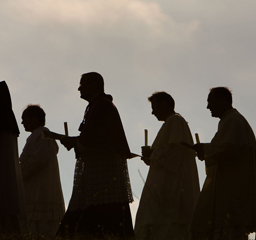 To highlight the reason why these chants stirred and stimulated these composers, St. Clair brought on the astonishing Norbertine Fathers of St. Michael’s Abbey, donning their elegant white habits, to sing chants in between each of Respighi’s four sections, which the Symphony performed with astoundingly theatrical sincerity. It was a brilliant maneuver that both educated and stirred patrons (be sure to arrive ten minutes early to hear the Fathers and Jacobs offer even more of this still-influential music). It’s so beautiful that anyone considering apostasy will bounce back to the faith. And non-religious folk such as me will simply be brought to tears by the beauty that man is capable of achieving.
To highlight the reason why these chants stirred and stimulated these composers, St. Clair brought on the astonishing Norbertine Fathers of St. Michael’s Abbey, donning their elegant white habits, to sing chants in between each of Respighi’s four sections, which the Symphony performed with astoundingly theatrical sincerity. It was a brilliant maneuver that both educated and stirred patrons (be sure to arrive ten minutes early to hear the Fathers and Jacobs offer even more of this still-influential music). It’s so beautiful that anyone considering apostasy will bounce back to the faith. And non-religious folk such as me will simply be brought to tears by the beauty that man is capable of achieving.
photos courtesy of Pacific Symphony
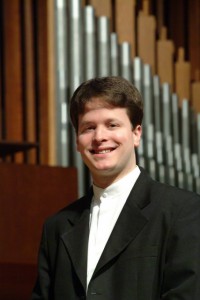 Pacific Symphony
Pacific Symphony
Cathedrals of Sound
Renée and Henry Segerstrom Concert Hall
in Costa Mesa
preview talk with Alan Chapman begins at 7
ends Saturday, October 25, 2014
for tickets, call 714.755.5799
or visit Pacific Symphony
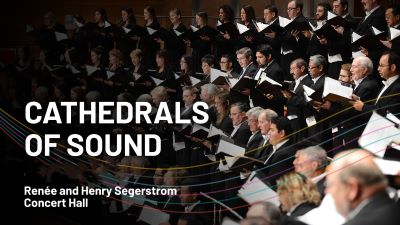
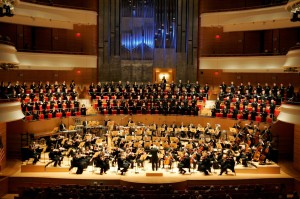

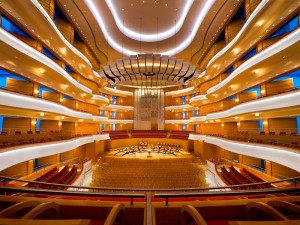
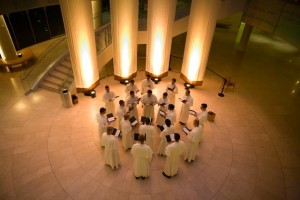
{ 1 comment… read it below or add one }
The Chorale performed the Durafle Requiem several times on our Paris tour two years ago. But to perform it again under St. Claire’s direction is to experience a more poignant and powerful Requiem. He is able to imbue in each performer a strong desire to perform with strong emotion and precision. The result is experience it as Durafle intended with strong and powerful sections, and those that evoke pathos.